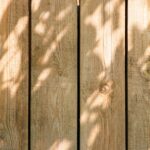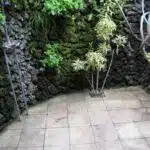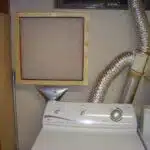As a landscaping design expert, one of the most common requests I receive from clients is to create a private outdoor space for them. A privacy fence or screen not only provides seclusion but also adds aesthetic value to your yard. However, designing a privacy fence or screen requires careful consideration of several factors such as budget, local regulations, and personal preferences.
Firstly, it’s important to determine the purpose of the fence or screen. Is it solely for privacy, or does it also need to block out noise or wind? The height and material of the fence will vary depending on your specific needs. Additionally, you’ll need to research any local zoning laws or homeowner association regulations that may affect the design and height of your fence. By taking these factors into account from the beginning stages of design, you can ensure that your privacy fence or screen meets both functional and regulatory requirements while adding beauty to your yard.
Assessing Your Yard’s Privacy Needs
To design an effective privacy fence or screen for your yard, it is crucial to first assess your privacy needs. Start by evaluating the existing barriers in your yard, such as trees and shrubs, to determine their effectiveness in providing privacy. Consider the height and density of these barriers, as well as their placement in relation to areas where you need privacy the most. Identifying any gaps or weaknesses in these existing barriers will help you determine what additional measures you may need to take.
Another important factor to consider when assessing your yard’s privacy needs is privacy-enhancing landscaping. This includes plants that are specifically chosen for their ability to provide privacy, such as tall grasses and hedges. You may also want to consider adding features like water fountains or garden walls that can block views from neighboring properties. However, keep in mind that these options require maintenance and may not be feasible for all yards or budgets.
Ultimately, determining your privacy needs will depend on a variety of factors unique to your property and personal preferences. Take the time to carefully evaluate your current situation and explore all available options before making any decisions about fencing or screening solutions. Next step is setting a realistic budget for your project based on what you have discovered during this assessment process.
Setting A Realistic Budget
When it comes to designing a privacy fence or screen for your yard, setting a realistic budget is an important first step. As the saying goes, “you get what you pay for,” and this is certainly true when it comes to outdoor structures. A well-designed and expertly installed fence can add significant value to your property, while a poorly constructed one can detract from its overall appeal.
If you’re considering DIY options, keep in mind that while you may save money on labor costs, you’ll still need to purchase materials and possibly rent tools or equipment. Additionally, without professional expertise, there’s a greater risk of mistakes that could lead to costly repairs down the line. On the other hand, hiring professionals ensures that the job is done right the first time and can save you time and stress.
Ultimately, your budget will depend on a variety of factors including the desired materials, size of your yard, and complexity of the design. It’s important to do research ahead of time to get an idea of what costs are associated with different options. Consulting with a landscaping design expert can also help you determine what will work best for your specific needs and budget constraints.
Considering Local Regulations And Zoning Laws
Local regulations and zoning laws are an essential aspect to consider when planning to install a privacy fence or screen for your yard. The first step is to review the local ordinances, which determine the height, placement, and design of fences in your area. Some cities have strict regulations on fence structures that protect the safety of the neighbors and prevent obstruction of views.
Privacy fence benefits are numerous, from reducing noise levels to creating a barrier between your property and prying eyes. However, before installing a fence, it is necessary to check if you need zoning exemptions. Zoning exemptions are permits granted by the city that allow you to deviate from certain zoning regulations. These permits are usually required if you want to build a fence higher than what is allowed in your area.
Knowing the regulations and obtaining necessary permits will save you time and money in the long run. It is important to note that some cities require specific materials for fences or screens. Therefore, it is advisable to consult with a professional landscaper who can help you navigate through these regulations while ensuring that your privacy needs are met effectively. In the next section, we will discuss how choosing the right materials for your fence or screen can complement both functionality and aesthetic appeal of your outdoor space.
Choosing The Right Materials For Your Fence Or Screen
After considering local regulations and zoning laws for your privacy fence or screen, it’s time to choose the right materials. Two popular options to consider are wood and vinyl. Wood fences offer a natural look and can be stained or painted to match your home’s exterior. However, wood requires more maintenance over time, including regular sealing and staining to prevent rot and insect damage. On the other hand, vinyl is low-maintenance but may not blend in as well with the surrounding landscape.
Another consideration when designing your privacy fence or screen is whether to choose a solid panel fence or a privacy screen. A solid panel fence provides complete privacy but can feel imposing in smaller yards or when used around the entire perimeter of a property. Privacy screens, on the other hand, offer partial coverage while still allowing air and light to pass through. They’re ideal for creating visual separation between two areas without completely blocking them off.
When deciding on the optimal height for your privacy fence or screen, consider the purpose of your design as well as local regulations. For maximum privacy, aim for at least 6 feet high. However, keep in mind that some neighborhoods have height restrictions for fencing that must be followed. Additionally, if you’re using your fence or screen primarily for aesthetic purposes rather than privacy concerns, you may opt for a shorter height that still matches the style of your home and landscaping design. Ultimately, choosing the right materials and height will depend on several factors unique to your yard’s needs and goals.
Optimal Fence Height For Maximum Privacy
When designing a privacy fence or screen for your yard, the height of the fence is an essential factor to consider. The primary purpose of a privacy fence is to maximize privacy and block unwanted views from neighbors or passersby. Therefore, it’s crucial to determine the optimal fence height that serves this function while balancing aesthetics.
To determine the ideal height for maximum privacy, you need to evaluate various factors such as your property’s location, topography, and surrounding environment. For instance, if your house is situated on an elevated position overlooking neighboring properties, a higher fence may be necessary to provide adequate cover. On the other hand, if you live in a flat area with low-lying buildings around your property, a lower fence may suffice.
Privacy vs. aesthetics is another critical consideration when deciding on the optimal height for your privacy fence. While a tall fence may offer maximum seclusion and security, it can also appear imposing and unattractive. A shorter fence with additional design elements such as lattice panels or decorative post caps can provide both functional privacy and aesthetic appeal. Ultimately, it’s up to you to find the right balance between form and function that suits your preferences and complements your landscape design.
Transitioning into deciding on a design style: Once you have determined the ideal height for your privacy fence or screen, the next step is choosing a design style that enhances its functionality while complementing your outdoor décor.
Deciding On A Design Style
As we move on to deciding the design style of your privacy fence or screen, it’s important to consider the overall aesthetic and ambiance you want to create in your outdoor space. Do you prefer a modern or traditional look? A minimalist or ornate design? Your answers to these questions will help guide you towards a design that aligns with your personal taste and complements the existing features of your yard.
For those who lean towards a modern aesthetic, a sleek and simple fence design may be ideal. This could involve using clean lines, neutral colors, and minimal ornamentation to create a streamlined look that feels contemporary and refined. On the other hand, those who prefer more traditional styles may opt for a fence with intricate details like scrollwork or lattice patterns, which can add visual interest and charm.
When considering whether to go for a minimalist or ornate fence design, it’s important to think about how it will fit within the larger context of your yard. If you have existing landscaping features like fountains or garden beds that are highly detailed and ornate, it might make sense to balance them out with a simpler fence design that doesn’t compete for attention. Conversely, if your yard is fairly plain and lacking in detail, an ornate fence could add some much-needed visual interest.
Moving forward, we’ll explore how you can balance functionality and aesthetics when designing your privacy fence or screen. By carefully considering both aspects of the project, you can create a structure that not only looks great but also serves its intended purpose effectively.
Balancing Functionality And Aesthetics
1.When considering the design of a privacy fence or screen for your yard, it is important to balance the desired aesthetic with the necessary functionality to ensure a successful outcome. 2.The choice of materials should be appropriate for the desired outcome, taking into account factors such as maintenance, longevity, and the local climate. 3.Mixing different styles and materials can add visual interest to the design, but should be done in a way that does not detract from the overall aesthetic. 4.Blending the fence or screen with the existing landscape can help to create a seamless transition between the two elements and ensure a cohesive design. 5.Care should be taken to ensure that any additions to the yard do not detract from the overall aesthetic of the space. 6.By taking the time to consider both the functional and aesthetic needs of the design, a well-balanced privacy fence or screen can be created.
Choosing Materials
When it comes to designing a privacy fence or screen for your yard, one of the most important factors to consider is the choice of materials. This decision can have a significant impact on both the functionality and aesthetics of your outdoor space. As a landscaping design expert, I recommend exploring eco-friendly options that not only look great but are also sustainable.
Wood is a popular choice for privacy fences, but it’s not always the most eco-friendly option. If you’re looking for cost-effective alternatives that are good for the environment, consider bamboo or reclaimed wood. Both materials are durable and long-lasting while being more sustainable than traditional wood options. Plus, they can add an exotic touch to your landscape design.
Another option for a privacy fence or screen is using plants. This approach not only provides a natural barrier but also contributes to improving air quality and reducing noise pollution in your yard. Some popular plant choices include bamboo, evergreen shrubs, and ornamental grasses. Not only do they offer privacy and beauty, but they also attract beneficial wildlife such as birds and butterflies. By choosing eco-friendly options and cost-effective alternatives when designing your privacy fence or screen, you can create an attractive and functional outdoor space that benefits both you and the environment.
Mixing Styles
When it comes to designing a functional and aesthetically pleasing outdoor space, mixing styles can be a great way to achieve balance. Mixing materials and color coordination are two key elements in creating a cohesive design that meets both your practical needs and visual preferences. As a landscaping design expert, I always recommend exploring different options to find what works best for your unique situation.
Mixing materials can add depth and complexity to your privacy fence or screen, especially if you choose contrasting textures or colors. For example, combining natural stone with wood or metal can create an interesting visual contrast that draws the eye. Similarly, incorporating reclaimed materials into your design can add character and history to your outdoor space while also being eco-friendly.
Color coordination is another important consideration when mixing styles in your landscape design. Whether you prefer bold, bright colors or subdued neutrals, choosing a color palette that complements your existing surroundings can make all the difference. By selecting complementary colors or using accents strategically, you can create a harmonious look that ties everything together.
Overall, mixing styles is an effective way to balance functionality and aesthetics in your outdoor space. Whether you’re looking for privacy fencing or just want to spruce up your yard’s appearance, exploring different materials and color palettes can help you achieve the perfect balance of form and function. As always, it’s important to consult with an experienced landscaping design expert who can guide you through the process and help bring your vision to life.
Blending With Landscape
As a landscaping design expert, I always emphasize the importance of balancing functionality and aesthetics in creating an outdoor space. One key aspect to consider is how well your design blends with the existing landscape. To achieve this, it’s essential to pay attention to color scheme and texture contrast.
Blending with the landscape means creating a design that looks like it belongs in its surroundings. This can be achieved through careful selection of materials and colors that complement the natural elements in your yard. Using textures that mimic those found in nature, such as rough stone or smooth river rock, can enhance the aesthetic appeal of your outdoor space.
Another way to blend with the landscape is by choosing a color scheme that works with the existing foliage and plants in your yard. By selecting complementary colors or using accents strategically, you can create a harmonious look that ties everything together. This will not only make your outdoor space more visually appealing but also feel more organic and integrated into the environment around it.
In conclusion, blending with the landscape is an important consideration when balancing functionality and aesthetics in creating an outdoor space. By paying attention to texture contrast and color scheme, you can achieve a design that looks like it belongs in its surroundings while still meeting your practical needs. As a landscaping design expert, I recommend working with professionals who have experience in blending designs with landscapes to ensure you get the best results possible.
Incorporating Landscaping And Greenery
Balancing functionality and aesthetics is a crucial aspect of designing a privacy fence or screen. However, incorporating landscaping and greenery can take your design to the next level. Creating shade, vertical gardening, adding color, and natural barriers are some ways to enhance the beauty of your privacy fence or screen.
Creating shade is beneficial in hot climates as it provides relief from the sun’s intense heat. Incorporating climbing plants such as Virginia creeper or Boston ivy on your fence or screen can create a beautiful and functional shaded area. Vertical gardening is also an excellent way to add greenery while maximizing space. You can use hanging planters, trellises, or even repurpose old gutters as planters to grow herbs, flowers, and other small plants.
Adding color to your privacy fence or screen will make it stand out and add dimension to your yard. You can paint your fence using vibrant colors that complement the surrounding landscape or use colorful flowering plants such as daylilies or roses. Natural barriers such as tall grasses or shrubs can also provide a beautiful backdrop for your fence while creating more privacy.
When considering landscaping elements for your privacy fence or screen design, it’s important to keep maintenance requirements in mind. Choose plants that are easy to care for and require minimal watering if you live in an area with water restrictions. Also, ensure that vines do not damage the structure of your fence by using supports such as mesh netting or wire cages. By incorporating these landscaping ideas into your design, you can create a functional and beautiful outdoor space that serves both practical and aesthetic purposes.
Moving forward with maintenance requirements, regular upkeep is essential for keeping your privacy fence or screen looking its best over time.
Maintenance Requirements
While many homeowners may focus on the initial installation of a privacy fence or screen, it’s important to consider the maintenance requirements of this addition to your property. One key factor is weather resistance. Depending on the location of your yard, you may need to select materials that can withstand high winds, heavy rain, or extreme temperatures. This is especially important if you live in an area with frequent storms or harsh winters.
Another consideration for maintaining your privacy fence or screen is staining options. Over time, natural wood materials can become faded and discolored from exposure to sunlight and moisture. To prevent this, you may want to consider applying a stain or sealant that can protect the wood and enhance its appearance. Additionally, some fencing materials such as vinyl or metal may not require staining but should still be cleaned regularly to prevent buildup of dirt and debris.
By selecting weather-resistant materials and utilizing staining options where appropriate, you can ensure that your privacy fence or screen remains a valuable addition to your yard for years to come. However, it’s important to note that even with proper maintenance, no fence is completely impenetrable. In the next section, we will discuss additional steps you can take to enhance security features for your privacy fence or screen.
Enhancing Security Features
Maintaining a privacy fence or screen requires regular upkeep to ensure its longevity. However, there are additional features that can be added to enhance the overall security of your yard. One such feature is privacy fence lighting. Strategically placed lighting can not only provide visibility at night but also act as a deterrent for potential intruders. Motion-sensor lights can also be installed for added convenience and energy efficiency.
Another security feature that can be incorporated into your privacy fence is smart home integration. This technology allows you to monitor and control the access points to your property through your phone or other devices. You can set up alerts for when someone enters or exits your yard, and even grant temporary access codes to visitors such as delivery personnel or house sitters. With these features, you can have peace of mind knowing that your property is secure even when you’re not there.
When it comes to installation, there are pros and cons to both DIY and professional options. DIY installation may save money, but it requires more time and effort on your part. It’s important to consider factors such as level of experience, tools needed, and permits required before deciding whether to tackle the project yourself. On the other hand, professional installation offers expertise and efficiency, but at a higher cost. Ultimately, the decision should be based on personal preference and budget constraints.
Transitioning into the subsequent section about ‘diy vs. professional installation’, it’s important to weigh all options carefully before making a decision. While DIY installation may seem like an attractive option for those looking to save money, it’s crucial to consider whether you have the necessary skills and resources to complete the project successfully. In contrast, professional installation may come at a higher cost but ensures that the job is done correctly by experienced professionals who have access to specialized tools and equipment.
Diy Vs. Professional Installation
When it comes to designing a privacy fence or screen for your yard, one of the first things you need to consider is whether to do it yourself or hire a professional. Both options have their pros and cons, depending on various factors such as budget, time, and skill level.
DIY installation can save you money on labor costs but may require a significant investment in tools, materials, and time. On the other hand, hiring a professional can ensure high-quality workmanship and faster completion time but may come with a higher price tag. It is essential to weigh these factors carefully before making a decision.
Budget considerations should not be overlooked when deciding between DIY or professional installation. If you have limited funds available for your project, doing it yourself may be the more practical option. However, if you are willing to spend more money upfront, hiring a professional could provide long-term benefits such as increased property value and lower maintenance costs. Ultimately, the choice comes down to personal preferences and priorities.
Pros of DIY installation:
Lower labor costs
More control over design and materials
Potential sense of accomplishment
Cons of DIY installation:
Higher investment in tools and materials
Longer completion time
Greater risk of mistakes
Pros of professional installation:
High-quality workmanship
Faster completion time
Increased property value
Cons of professional installation:
Higher upfront cost
Less control over design and materials
Potential communication issues with contractors
Before starting any construction project on your property, it is essential to obtain necessary permits and approvals from local authorities. Failure to do so can result in fines or even legal action. The specific requirements vary depending on your location and the type of fence/screen you plan to install. Consulting with a licensed contractor or contacting your city’s building department can help clarify what permits are needed for your project. Once you have all the necessary permits and approvals, you can proceed with confidence knowing that your project is in compliance with local regulations.
Obtaining Necessary Permits And Approvals
- Before beginning the design process for a privacy fence or screen for a yard, it is important to identify local requirements and regulations.
- This may include identifying local zoning laws, neighborhood rules, and other regulations that may affect the design.
- Once the requirements have been identified, the necessary permits must be applied for in order to move forward with the design.
- The permit application must be completed accurately and in full to ensure that the process is completed as quickly as possible.
- All required documentation, such as plans, sketches, and materials lists, must be submitted along with the permit application in order to successfully obtain the necessary approved permits.
- Failing to submit the required documentation or providing inaccurate information may result in a delay or rejection of the permit application.
Identifying Requirements
When designing a privacy fence or screen for your yard, it is important to identify the requirements necessary for obtaining the necessary permits and approvals. One of the most crucial aspects to consider is the durability of the fence. A privacy fence should be constructed using materials that can withstand extreme weather conditions, such as high winds and heavy rainfall. Moreover, it should be designed to last for many years without compromising its structural integrity.
Another important consideration when designing a privacy fence is its environmental impact. It is essential to choose fence materials that are eco-friendly and do not harm the environment. For instance, wood is a popular material choice but may not be as sustainable as bamboo or vinyl fencing options. Additionally, there are specific regulations in some areas that restrict certain types of fencing materials due to their negative impact on the environment.
Finally, it is crucial to research local zoning laws before constructing a privacy fence. Each state has its own set of regulations regarding fence height, location, and design specifications. Failure to adhere to these guidelines can result in costly fines or even legal action. By following these requirements and choosing durable and eco-friendly materials for your privacy fence, you can ensure a beautiful addition to your yard while also protecting your privacy.
Applying For Permits
As landscaping design experts, we understand the importance of obtaining necessary permits and approvals when constructing a privacy fence. Timeline management is crucial in this process to ensure that all required permits are obtained before construction begins. Applying for permits can be a lengthy process, and it is essential to research and understand the permit application process in your area.
Before applying for permits, it is important to have a clear understanding of the regulations regarding fence height, location, and design specifications in your area. Failure to adhere to these guidelines can result in costly fines or even legal action. Once you have identified the requirements needed for your privacy fence project, you can begin the permit application process.
The permit application process typically involves submitting plans and designs for approval, paying fees, and scheduling inspections. It is important to ensure that all necessary documents are submitted accurately and on time to avoid delays in the approval process. By properly managing the timeline and following all regulations during the permit application process, you can obtain the necessary approvals for your privacy fence project without any issues.
Submitting Documentation
As landscaping design experts, we understand that obtaining necessary permits and approvals is crucial when constructing a privacy fence. Reviewing requirements related to fence height, location, and design specifications in your area is essential before applying for permits. Failure to comply with these regulations can result in costly fines or legal action.
Once you have identified the requirements needed for your privacy fence project, the next step is gathering documentation for the permit application process. This typically involves submitting plans and designs for approval, paying fees, and scheduling inspections. It is important to ensure that all necessary documents are submitted accurately and on time to avoid delays in the approval process.
Submitting documentation requires attention to detail and careful management of timelines. The success of your privacy fence project depends on obtaining necessary permits and approvals without any issues. As landscaping design experts, we recommend that you work with professionals who can guide you through the permit application process efficiently and effectively. By doing so, you will be able to obtain all necessary approvals for your privacy fence project seamlessly.
Contracting A Professional Installer
Hiring a professional installer to design and build your privacy fence or screen can be a great option for those who want to ensure quality workmanship and efficient installation. While it may seem like an expensive endeavor, the benefits of hiring a professional can outweigh the costs in the long run. With their expertise and access to high-quality materials and tools, they can create a custom design that fits your needs and preferences.
Cost comparison is an important consideration when deciding whether to hire a professional or attempt a DIY project. While DIY projects are often cheaper upfront, they can end up costing more in the long run if mistakes are made or if the finished product is not up to par. A professional installer will not only have the necessary skills and experience but also carry insurance to protect against any damages or accidents that may occur during installation.
When considering DIY options, it’s important to evaluate your own skills, time availability, and willingness to take on such a project. Building a privacy fence or screen requires attention to detail and precise measurements that may be difficult for inexperienced individuals. If you do decide to go the DIY route, be sure to research thoroughly, follow safety protocols, and invest in high-quality materials for optimal results.
Ultimately, contracting a professional installer is worth considering for those who want peace of mind knowing that their privacy fence or screen is built with longevity in mind. In evaluating long-term costs associated with installation, it’s important to factor in maintenance, repairs, and potential replacement costs down the line. With proper planning and execution from a reputable installer or diligent DIY efforts, you can enjoy enhanced privacy and security for years to come.
Evaluating Long-Term Costs
Contracting a professional installer for your privacy fence or screen is an excellent option if you lack the time, skills, or equipment to install it yourself. However, it is crucial to note that hiring a professional comes with added costs. Comparing upfront expenses of hiring a professional versus doing it yourself can help you make an informed decision. While hiring a professional may seem expensive at first, keep in mind that they have access to better quality materials and tools, reducing the likelihood of costly mistakes in the long run.
Another important factor to consider when designing your privacy fence or screen is long-term maintenance costs. Regular maintenance and repairs are necessary to keep your fence or screen in good condition and extend its lifespan. Maintenance expenses vary depending on various factors such as material type, weather conditions, and location. For instance, wooden fences require regular staining or painting to prevent rotting and warping caused by exposure to sunlight and rainwater. On the other hand, vinyl fences are more durable but can become brittle over time when exposed to extreme temperatures.
In conclusion, evaluating long-term costs should be an essential part of designing your privacy fence or screen. By comparing upfront expenses and long-term maintenance costs of different fencing materials and installation methods, you can make an informed decision that suits both your budget and needs. With proper maintenance and care, your privacy fence or screen will provide years of enjoyment in your private outdoor oasis.
Enjoying Your Private Outdoor Oasis
A private outdoor oasis is like a hidden gem, a sanctuary where you can escape from the hustle and bustle of everyday life. It’s your own personal retreat where you can relax and recharge. But to fully enjoy your outdoor oasis, you need to have privacy. A well-designed privacy fence or screen can provide the seclusion you crave.
When considering your privacy options, there are two main choices: privacy fences and screens. Privacy fences are solid structures that create a physical barrier between your yard and the outside world. They come in various materials such as wood, vinyl, and metal, and offer different levels of opacity. On the other hand, privacy screens are more like partitions that can be installed on an existing structure or added onto a fence. They offer flexibility in terms of placement and design.
The benefits of having outdoor privacy cannot be overstated, especially when it comes to mental health. Being able to step away from the rest of the world for even just a few minutes a day can reduce stress levels and improve overall well-being. With a well-designed privacy fence or screen, you can create an atmosphere that promotes relaxation and peace of mind in your little corner of paradise. So take some time to consider which option is best for you, and start enjoying all the benefits that come with having your own private outdoor oasis.
Conclusion
In conclusion, designing a privacy fence or screen for your yard requires careful consideration of various factors such as your privacy needs, budget, local regulations and zoning laws, material selection, optimal height and long-term costs. It is like crafting a masterpiece garden bed where each element has to be carefully chosen to create an aesthetically pleasing whole. The right design can transform your outdoor space into a private oasis where you can relax and unwind without any disturbance.
Remember, the key to a successful privacy fence or screen is not just about achieving maximum privacy but also enhancing the beauty of your yard. By choosing the right materials, contractor and obtaining necessary permits and approvals, you can create an outdoor sanctuary that reflects your style and personality. So go ahead and design that perfect fence or screen that will offer both beauty and privacy to your outdoor space!
Image Credits
- “Sideyard privacy fence” by Field Outdoor Spaces (featured)

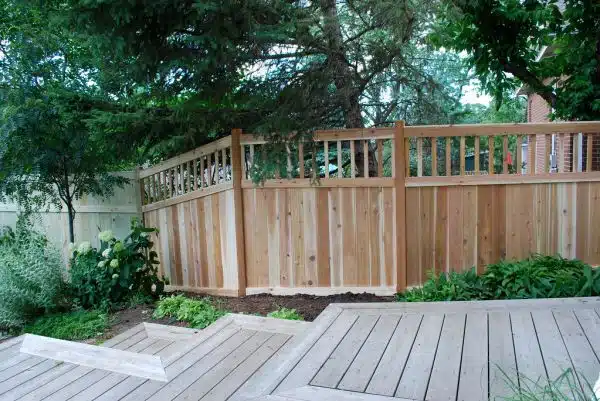


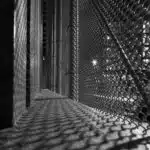


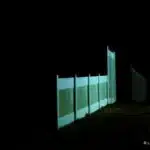


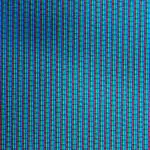






![How To Build A Detached Deck 18 Force Reconnaissance Detachment Deck Shoot [Image 4 of 4]](https://green-life.blog/wp-content/uploads/2023/05/RJo3tlizSGjq-150x150.jpg.webp)

